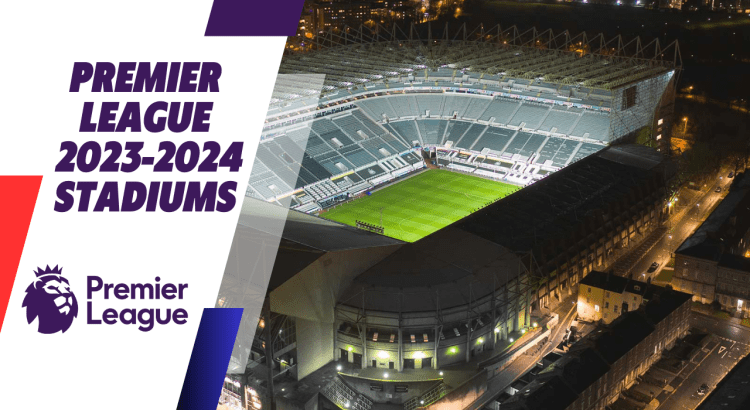The 2023–24 Premier League will be the 32nd season of the Premier League and the 125th season of top-flight English football overall.
Twenty teams will compete in the league and in this article, we will have a look at their stadiums.
Premier League stadiums 2023-2024
The Emirates Stadium in London is the home stadium of Arsenal since its completion in 2006. It has a current seated capacity of 60,704 and is 5th largest football stadium in England.
The Villa Park in Birmingham is the home stadium of Aston Villa since 1897. The stadium has hosted a record of 55 FA Cup semifinals. It has also hosted matches for the 1966 World Cup, the 1996 Euro and the 1999 Cup Winners’ Cup final.
The Dean Court is the home ground of AFC Bournemouth since 1910. With a capacity of 11,307, it is the 2nd smallest stadium in the history of the Premier League.
The Brentford Community Stadium is the home of Brentford FC since its opening in 2020. Wi th a capacity of 17,250 it is 7th smallest stadium in Premier League history.
The Falmer Stadium is the home ground of Brighton & Hove Albion F.C. since its completion in 2010.
One of the oldest football stadiums in England the Turf Moor, home of Burnley FC. It opened in 1883 which makes it the second-longest continuously used ground in English professional football.
Another historic English stadium is the Stamford Bridge in London. It first opened in 1877 and is the home of Chelsea since 1905. It has a capacity of 40,343.
The Selhurst Park is a football stadium in London. It is the home of Crystal Palace F.C. since 1924. It has a capacity of 25,486.
The Goodison Park is a football stadium in the city of Liverpool. It has been the home of Everton since 1892. The stadium has hosted the most top-flight games from any other stadium in England. It was also the venue for a semi-final match in the 1966 World Cup.
The Craven Cottage is a football stadium in London and has been the home of Fulham since 1896. It has a capacity of 29,600.
The Anfield is a football stadium in Liverpool. It has been the home of Liverpool since their formation in 1892. The stadium has a capacity of 53,394. The Anfield Road Stand is currently being redeveloped to bring the stadium capacity to around 61,000.
The Kenilworth Road in the home ground of the newly promoted Luton Town FC since 1905. With a capacity of 10,356, the stadium will become the smallest to ever host a Premier League game.
The City of Manchester Stadium is the home of Manchester City since its completion in 2003. The stadium hosted the 2008 UEFA Cup final and has a capacity of 53,400.
The Old Trafford is the home of Manchester United since 1910. With a capacity of 74,310, it is the second largest football stadium in England. The stadium hosted matches for the 1966 World Cup and the Euro 1996.
The St James’ Park is the home of Newcastle United since 1892. The stadium hosted matches for the Euro 1996.
The City Ground has been home to Nottingham Forest since 1898 and has a capacity of 30,455.. The stadium was a venue for the UEFA Euro 1996.
The Bramall Lane in Sheffield is one of the oldest stadiums in England as it was opened in 1855. Since 1889 it is the home ground of Sheffield United F.C..
The 3rd largest football stadium in England with a seating capacity of 62,850 is the Tottenham Hotspur Stadium, home of Tottenham Hotspur F.C. It opened in 2019 replacing the club’s previous ground, White Hart Lane.
The London Stadium was constructed specifically for the 2012 Summer Olympics. It is now used as the home of West Ham United and has a capacity of 62,500.
The Molineux Stadium has been the home ground of Wolverhampton Wanderers since 1889. The stadium hosted the first UEFA Cup Final in 1972.




